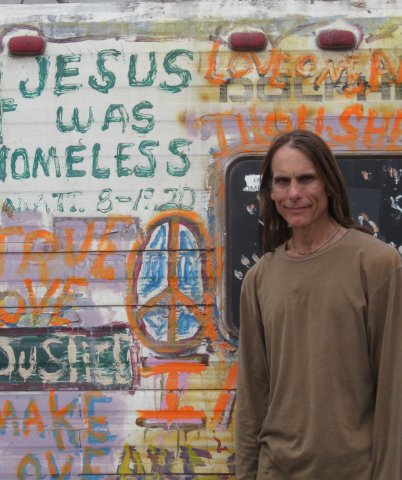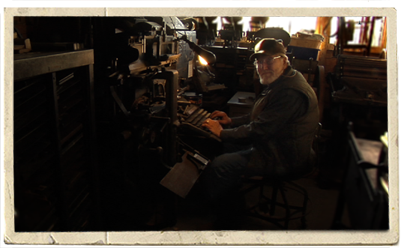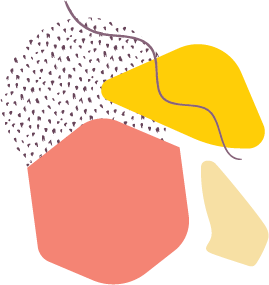Donor Unknown follows the story of JoEllen Marsh, 20, as she goes in search of the sperm donor father she only knows as Donor 150. JoEllen has always known her family ‘wasn’t like other families’. She grew up in Pennsylvania with two mothers, and a burning curiosity to know more about her anonymous donor father. When JoEllen discovers a unique online registry that connects donor-conceived children, she manages to track down a half-sister in New York. The New York Times picks up the story, and, over time, 12 more half-siblings emerge across the USA.The New York Times article also falls into the hands of Jeffrey Harrison, living alone with four dogs and a pigeon in a broken-down RV in a Venice Beach car park. In the 1980s, Jeffrey supplemented his meagre income by becoming a sperm donor at California Cryobank. His number was Donor 150. Donor Unknown follows JoEllen from her discovery of her siblings, to the moment Jeffrey steps forward to identify himself as Donor 150, to her decision to travel to California to meet him. Along the way, we meet Danielle in New York, who was not told by her parents that she was donor-conceived till the age of 14, and is uncertain of the kind of relationship she could ever sustain with Jeffrey; Rachelle in Memphis, who is not sure if she ever wants to meet him; Ryann and Roxanne, who live in California and have already established some kind of relationship with Jeffrey; and Fletcher, 19, who decides the time is right to follow JoEllen on her journey to meet their donor father. At the centre of the film is Jeffrey, living with his dogs and his pigeon in a car park by the beach, and preparing his broken-down RV for the arrival of JoEllen and Fletcher. At 52, his sperm donor days are over but his story has cast him in the role of an unlikely pioneer. His decision to cast aside his donor anonymity to meet them is a step few donors have taken.Donor Unknown is a film about a new kind of ‘family’. Linked by their connection to a single sperm donor – 150 – parents and children are creating and navigating a new set of relationships. They are discovering first hand what a close biological connection to a stranger means for themselves and their identity. What happens next opens up some fascinating questions about nature and nurture, the responsibilities of parenthood, the moral integrity of the cryobanks, and the hazards of genetic inheritance. As the laws on donor anonymity change in some countries, there are fewer sperm donors and there’s a roaring trade in ‘fertility tourism’, for overseas sperm and egg donation.Donor Unknown is a unique snapshot of a group of random people who are all pioneers. The parents – heterosexual, gay, single and in couples – were determined to have children against the odds, and happened to choose the same sperm donor. Now they’re living with the unpredictable consequences of their choice. What impact will meeting this stranger – Donor 150 – have on their children? What kinds of relationship can the children build with their biological father? How will letting Donor 150 into their lives affect their relationships as a family? And how will meeting his biological children change Jeffrey’s life?
Summary info for schedule – will be hidden on film page

Donor Unknown
Filmmaker(s)
Running Time
Donor Unknown
Filmmaker Notes:
Donor Unknown is a story for what has been called the ‘biological century’. From the human genome project to IVF, advances in life sciences since the millennium seem set to transform our relationship to the natural world and to each other, changing how we are conceived, born, grow up, cope with illness, and die.
Perhaps these developments also require new ideas about what it means to be human and how our social connections – families, relationships, friendships – are defined. If that’s the case, then Jeffrey Harrison (Donor 150), his children and their parents are pioneers on one stretch of this new frontier.
Sperm donation has been used as a method of conception for far longer than the first recorded incidence in medical journals in the US in the late nineteenth century. What is new is the ability of the donor-conceived child to discover the identity of his or her donor and to initiate contact. This raises some challenging questions: what does a connection based solely on genetics mean? Can it become the basis of a lasting ‘family’ relationship? Is it emotionally necessary for the child? Underlying the story of Jeffrey and his children is the industry which is developing around the technology of human reproduction – which is very different in the US from the UK. Donor Unknown is also a film about America, made from a European perspective – which I hope provokes us to think about the extent to which we want reproduction to be subject to powerful and lightly regulated commercial forces.
I was drawn to this story because it seemed to me that through an extraordinary set of coincidences, Jeffrey and his children were dealing with age-old human dilemmas – where do I come from? what is my connection with the past? where are the boundaries of my family? – in a uniquely modern context. Their openness and courage take us deeper than the obvious laughs to be had in a film about sperm donation. In making the film I wanted to approach the story through two kinds of journey – that of the children looking for their genetic inheritance, and that of Jeffrey discovering his new family of strangers. It’s a film that lends itself to cross-cutting – between places as Jeffrey’s sperm reached all corners of the United States, and between the siblings, as they discover each other and share common experiences thousands of miles apart.
But for me what really makes this story unique is the fact that Jeffrey is at its centre. Intelligent, eccentric and good-hearted, I admire him for the way he has lived out his beliefs – a true ‘fringe monkey’ as he says in the film. His comment that ‘I’m not really a nine to fiver’ is something of an understatement. When Jeffrey started donating sperm he’d moved to LA as an aspiring actor. But instead of landing a role in Hollywood, he ended up earning a living as a bit part in tourism videos, posing for Playgirl and waiting at tables. Sperm donation at $25 (and later £$80) a go was something he turned to survive. And thanks to his glowing profile, his sperm was popular. Now in his fifties, his life is very different from that of the hopeful youngster who moved to Hollywood. He lives in an RV on Venice Beach, and his closest relationships are with his dogs, and recently an adopted pigeon with a broken wing. The children coming forward offer him a new set of connections – and perhaps a new purpose .



